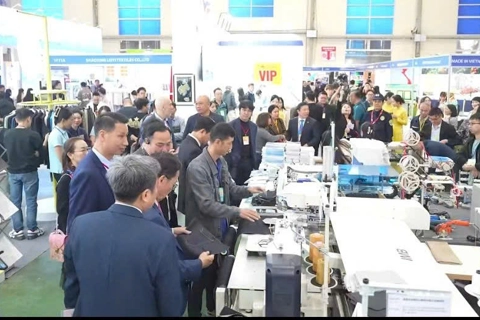Hanoi
Hanoi's Old Quarter – A museum of ancient urban life
Dec 25, 2020 / 11:05 AM
The history of establishment and development of "Thang Long - Hanoi is preserved in Hanoi`s Old Quarter.
Today, not only Vietnamese people but also international visitors are interested in Hanoi's Old Quarter and considered it as a cultural heritage, representative of Hanoi, the capital city with thousand years of civilization.
Situated next to Hoan Kiem Lake, Hanoi's Old Quarter includes 76 streets, limited by Hang Dau street to the north; Phung Hung street to the west; Hang Bong, Hang Gai, Cau Go and Hang Thung streets to the south; Tran Quang Khai and Tran Nhat Duat streets to the east.
Hanoi's Old Quarter was established in the early 15th century. During the Le dynasty in the early 16th century, people came to Thang Long from outlying areas for trading and gradually settled in what is now the Old Quarter. Thang Long under the Le dynasty had 36 guilds and to the Nguyen time, it had hundreds of guilds, villages and camps.
“Ke Cho” which Thang Long - Hanoi was once called, had a citadel, a town, a wharf, trade and craft guilds, suburban markets, villages specializing in farming and processing agricultural products. People from surrounding villages settled and worked in Thang Long – Hanoi. Traders and craftsmen gathered in guilds. Each guild filled a street, reflecting today in the names of the streets such as Hang Thiec (the guild of metal workers), Hang Ma (the guild of votive paper makers), Hang Can (guild of weight makers), Hang Bac (the guild of goldsmith), Hang Chieu (the guild of mattress makers), etc.
Hanoi’s Old Quarter is an architectural complex featuring the vertical small space from streets to houses, especially the tile roofs of unequal height with traditional decorative motifs of Vietnam. All of them constitute an typical landscape architecture of an ancient city in the traditional architecture of the North Delta, the cradle of Vietnamese culture. This is also typical of an ancient Asian city.
In the process of construction and development, Hanoi's Old Quarter is a place of concentrated and mixed inhabitation, cultural exchange among regions in the country and with other countries. The presence of Chinese congregations, the Great church, mosque, the Dutch and British shops, etc is the tangible evidence of this value.
With 1000 years of establishment and development, the Old Quarter is an important proof for the development history of the Thang Long capital and bears many valuable cultural treasures. These are the cultural heritages in need of preservation such as festivals, traditional cultural activities like ca tru singing, cheo singing, etc.
Hanoi’s Old Quarter is the hub of the country's culinary art with tasty traditional delicacies from taste, color, shape to cooking performance. The beauty of traditional culture has made the famous ancient elegance of the capital residents.
Together with the ancient town of Hoi An, Hanoi's Old Quarter is said to be the “museum of ancient urban life” of Vietnam.
Situated next to Hoan Kiem Lake, Hanoi's Old Quarter includes 76 streets, limited by Hang Dau street to the north; Phung Hung street to the west; Hang Bong, Hang Gai, Cau Go and Hang Thung streets to the south; Tran Quang Khai and Tran Nhat Duat streets to the east.
 Hanoi’s Old Quarter is the hub of the country's culinary art. |
“Ke Cho” which Thang Long - Hanoi was once called, had a citadel, a town, a wharf, trade and craft guilds, suburban markets, villages specializing in farming and processing agricultural products. People from surrounding villages settled and worked in Thang Long – Hanoi. Traders and craftsmen gathered in guilds. Each guild filled a street, reflecting today in the names of the streets such as Hang Thiec (the guild of metal workers), Hang Ma (the guild of votive paper makers), Hang Can (guild of weight makers), Hang Bac (the guild of goldsmith), Hang Chieu (the guild of mattress makers), etc.
Hanoi’s Old Quarter is an architectural complex featuring the vertical small space from streets to houses, especially the tile roofs of unequal height with traditional decorative motifs of Vietnam. All of them constitute an typical landscape architecture of an ancient city in the traditional architecture of the North Delta, the cradle of Vietnamese culture. This is also typical of an ancient Asian city.
In the process of construction and development, Hanoi's Old Quarter is a place of concentrated and mixed inhabitation, cultural exchange among regions in the country and with other countries. The presence of Chinese congregations, the Great church, mosque, the Dutch and British shops, etc is the tangible evidence of this value.
With 1000 years of establishment and development, the Old Quarter is an important proof for the development history of the Thang Long capital and bears many valuable cultural treasures. These are the cultural heritages in need of preservation such as festivals, traditional cultural activities like ca tru singing, cheo singing, etc.
Hanoi’s Old Quarter is the hub of the country's culinary art with tasty traditional delicacies from taste, color, shape to cooking performance. The beauty of traditional culture has made the famous ancient elegance of the capital residents.
Together with the ancient town of Hoi An, Hanoi's Old Quarter is said to be the “museum of ancient urban life” of Vietnam.








